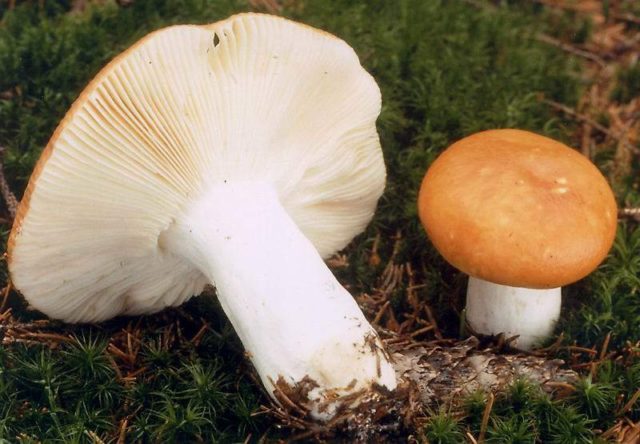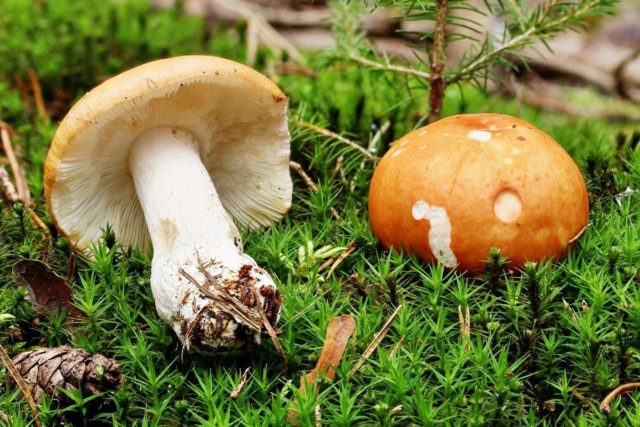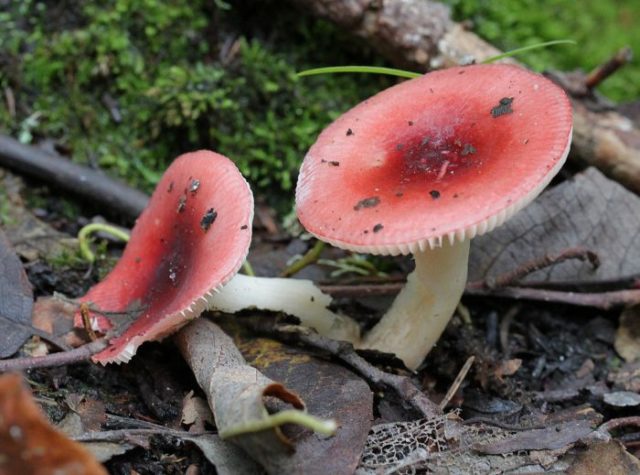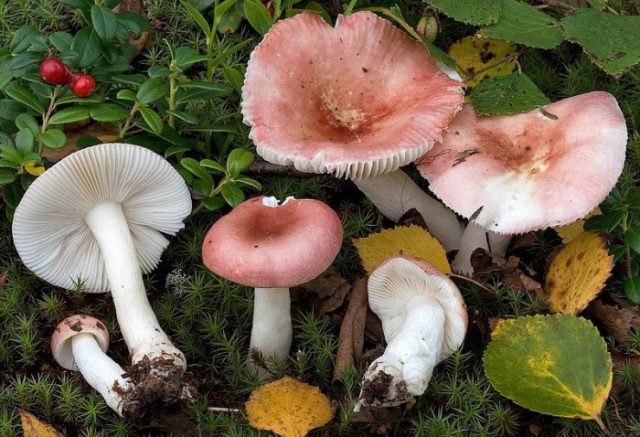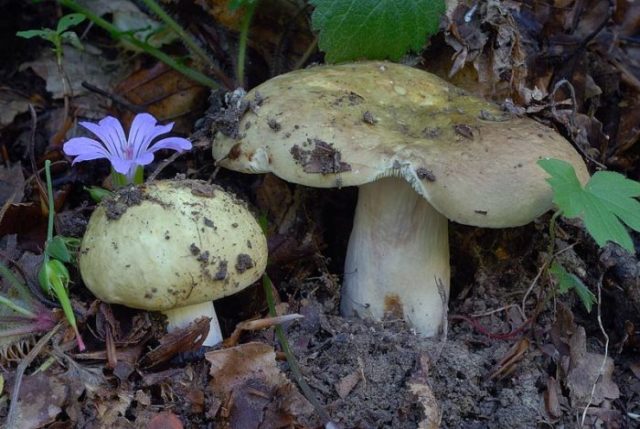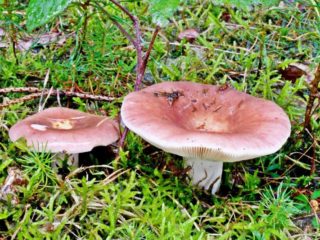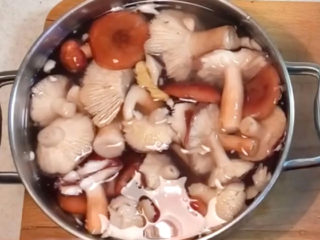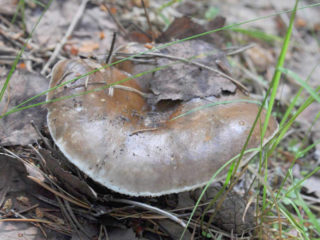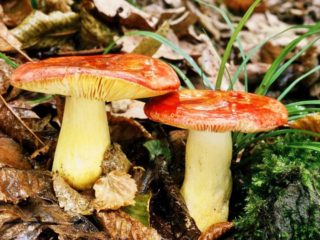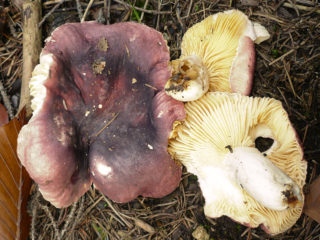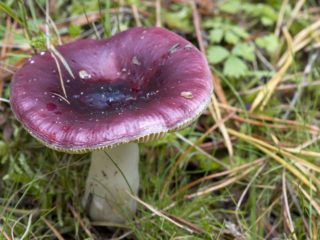Content
Russula gray belongs to the lamellar mushrooms of the Russula family. It is believed that this genus is the most diverse and numerous in the Russian Federation. Of all the mushrooms in forests, their number is 30-45%. The name usually comes from the color of the caps. There are edible and inedible species.
Where do graying russula grow?
Graying russula is popular in European countries, since the mushroom has practically no doubles and is difficult to confuse with other varieties. Grows in damp, coniferous thickets. Often found in the vicinity of pine trees. It also prefers deciduous forests and forms an association with alder and birch. Graying russula grows in blueberries and moss thickets.
What do graying russulas look like?
It is a rare lamellar mushroom. The cap is up to 15 cm in diameter. At first, a hemispherical shape is noted, which over time acquires a slightly depressed appearance. The color of the young skin is brown, brick, red-orange, depending on the location of germination. The color gradually changes, and at the end of the season the cap becomes a dirty gray shade.
In newly emerged russula, the film is sticky and the edges are smooth. In old specimens, the surface becomes smooth, even, dry, matte. The edging becomes ribbed. The skin is easily removed from only ½ of the cap. The pulp is dense.
The leg is hard, solid inside. The surface is wrinkled and strong. It is shaped like a cylinder. Color white or gray. The height of the lower part of the mushroom is 5-10 cm. The flesh of the stem is loose. When pressed or dried, it turns gray and then turns black.
The plates are wide but thin. They grow tightly to the cap. In the first days, the color of the plates is white, gradually fades, becoming gray.
Is it possible to eat gray russula?
Belongs to the third category of edible mushrooms. Young caps are used for food. They can be fried, boiled, canned, salted.
Taste qualities of mushroom
There is no doubt about the edibility of russula. Another important thing is the presence of bitterness in the taste. Some mushroom pickers recommend trying them right in the forest, chewing a small piece of the cap. It is believed that if the color of the mushroom has less red and burgundy shades, then it is more tasty.
Graying russula is a good addition to boletus, aspen, and boletus. Because they will absorb excess moisture and remain crispy. When pickling, mushrooms quickly absorb salt. After a day they become suitable for consumption.
Benefits and harm to the body
The nutritional value of gray russula is 19 kcal. The product is nutritious and contains:
- vitamins E, PP, group B;
- ascorbic, nicotinic acid;
- minerals: magnesium, iron, phosphorus, calcium, potassium, sodium, magnesium;
- mono- and disaccharides.
Due to the concentration of important elements, mushrooms have beneficial properties.
- Good prevention of gastrointestinal diseases.
- Positively affect the condition of the circulatory system. Thin the blood and prevent the formation of blood clots.
- For proper functioning of the cardiovascular system, they consume fermented milk product. It is obtained by souring milk with a mushroom.
- Graying russulas are included in the diet of those losing weight. The product helps to lose weight and fight obesity. This is possible due to a feeling of fullness and a prolonged lack of appetite.
- Lecithin prevents the appearance of cholesterol in the body.
Despite all the above positive qualities, graying russula can be harmful to humans. They are not recommended for use by people with chronic liver and kidney diseases. If you have allergies or intolerance to certain macroelements. Children under 12 years of age, as well as pregnant and lactating women, should not eat mushrooms.
False doubles
It should be noted right away that there are no poisonous russulas in the direct sense. The category of inedible mushrooms includes specimens that have a pungent, bitter taste. These may include toxic and slightly poisonous varieties. Similar external signs indicate the presence of false brothers.
- Russula watery. The cap is spherical, up to 5 cm in diameter. The skin is sticky and can be easily removed. The color of the surface of the mushroom is red-purple.The thickness of the leg is 1 cm, height 5 cm. It is thicker at the bottom. The pulp is watery, fragile, white. The smell is rare.
- Russula birch. The upper part has a diameter of up to 5 cm. The structure of the pulp is brittle and fleshy. The edge is ribbed. The surface color is bright red, pale pink. It all depends on the place of growth. The skin is easy to peel. The leg is white, sometimes a yellow tint is visible. Its surface is wrinkled and thickens towards the bottom. The taste of the mushroom pulp is bitter. There is no smell. Often found in spruce and birch forests.
- Russula gall. The shape of the cap is convex. Size 5-10 cm. Over time, it thickens, and a small tubercle appears in the center. Color beige or light yellow. The skin is sticky and can be peeled off along the contour. The white pulp has the smell of geranium and a bitter aftertaste.
- Russula olive. Large mushroom. The upper part has a diameter of 10-30 cm. Foma can be spherical or flat. The surface is dry, even, smooth. The leg grows up to 18 cm in height. Cylindrical shape, white color, thickness 2-6 cm.
Collection rules
Mushrooms appear between June and October. They should be collected in baskets or buckets. The plates are quite brittle and crumble, so mushroom pickers do not recommend carrying them in bags.
Graying russulas can be stored fresh for no more than two days without pre-treatment. Definitely in the refrigerator. Longer storage methods include pickling and salting. Canned mushrooms in a jar last about 1 year. Thanks to drying, russulas do not lose their nutritional and taste qualities for 2 years.
Preparation
The use of graying russula in cooking is quite diverse. They can be eaten fried, salted, boiled, however, they are not suitable for making soups.
The rules for heat treatment for all subspecies of russula are the same: first soak in cold water for a couple of hours, then boil for 10 minutes to eliminate bitterness in the pulp. After this, you can proceed to frying the mushrooms.
An unusual recipe for chops made from graying russula.
- Separate the top from the bottom.
- Clean and rinse the hats.
- Soak in salted water.
- Dry with a paper towel.
- Dip each mushroom in batter and then roll in breadcrumbs.
- Pour vegetable oil into a heated frying pan and place the caps there.
- Fry over low heat for 15 minutes.
Can be served as a separate dish or with a side dish. For a richer taste, it is recommended to top it with sour cream and garlic sauce.
Conclusion
Russula is a rare mushroom that is not only tasty, but also healthy. It prefers to grow in pine and deciduous forests. Has no doubles. However, inexperienced mushroom pickers may confuse this species with its false brothers. When collecting mushrooms, you must carefully examine the find. Otherwise, eating an inedible specimen can cause disruption of the gastrointestinal tract.
